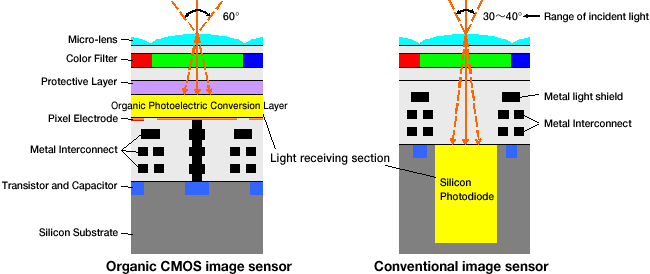Fujifilm and Panasonic made a significant joint announcement yesterday about a new “organic” sensor¬ that doubles the dynamic range of the best digital cameras currently on the market. For the most part, camera companies have concentrated on increasing resolution and most digital cameras have more resolution than we need now. However, we can always use more dynamic range for photos with better highlight and shadow details. The official press release from Fujifilm and Panasonic claims a signal-to-noise ratio of 88dB for the new “organic” CMOS sensor. To put that number in perspective, Nikon’s full-frame D800E, generally accepted as having the best image quality of any current DSLR, has a signal-to-noise ratio of 46dB. 
The new organic CMOS image sensor combines Fujifilm’s new “organic photoelectric conversion layer technology” with Panasonic’s “semiconductor device technology.” The silicon photodiodes used in traditional imaging sensors are replaced with a new organic film that collects more light and allows light to reach the sensor from a much wider angle. That means less highlight and shadow clipping and more accurate color. The organic sensor’s increased dynamic range should make a real difference in image quality with better low light performance as well as more accurate color and a wider tonal range in all conditions.
The press release didn’t say when we might see the new sensor used. But if they’re close enough to go public, it shouldn’t be too long – probably in the next year, I’d guess. It will be interesting to see when and where it first makes an appearance. Any bets on who uses it first and what kind of camera gets the first organic CMOS sensor?
Official Organic CMOS Sensor Press Release >>
Source: SLR Lounge



Leave a Reply